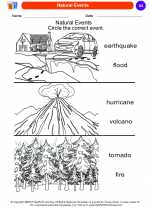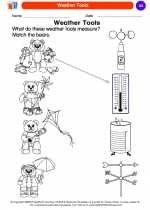Leaves
Leaves are an important part of a plant's anatomy and play a crucial role in the plant's life. They are the primary site for photosynthesis, the process by which plants convert sunlight, carbon dioxide, and water into energy.
Anatomy of a Leaf
A typical leaf consists of the following parts:
- Blade: This is the broad, flat part of the leaf that is responsible for capturing sunlight.
- Petiole: This is the stalk that attaches the leaf to the stem of the plant.
- Veins: These are the vascular tissues that transport water, nutrients, and sugars throughout the leaf.
- Stomata: These are small openings on the underside of the leaf that allow for gas exchange, enabling the plant to take in carbon dioxide and release oxygen.
Functions of Leaves
Leaves serve several important functions for the plant:
- Photosynthesis: As mentioned earlier, leaves are the primary site for photosynthesis, where they use sunlight to convert carbon dioxide and water into glucose (sugar), which the plant uses as energy.
- Transpiration: This is the process by which water vapor is released from the stomata on the leaf's surface, helping to regulate the plant's temperature and transport water and nutrients from the roots to the rest of the plant.
- Gas Exchange: The stomata also allow for the exchange of gases, enabling the plant to take in carbon dioxide and release oxygen during photosynthesis.
Types of Leaves
There are various types of leaves, each adapted to different environmental conditions and plant species. Some common types of leaves include:
- Simple Leaves: These are leaves with a single blade, such as those found on maple trees.
- Compound Leaves: These are leaves with multiple leaflets, like those found on roses or pinnate palms.
- Needle-like Leaves: These are long, thin leaves adapted for conserving water, found on coniferous trees like pines and spruces.
- Succulent Leaves: These are thick, fleshy leaves that store water, commonly found in desert plants like cacti and succulents.
Study Guide
Here are some key points to remember when studying leaves:
- What is the primary function of leaves in a plant?
- Identify and describe the different parts of a leaf.
- Explain the process of photosynthesis and the role of leaves in this process.
- Discuss the importance of transpiration in plants and how leaves contribute to this process.
- Describe the different types of leaves and provide examples of plants that have each type.
Understanding the structure and function of leaves is essential for understanding plant biology and the process of photosynthesis. By mastering these concepts, you will gain a deeper appreciation for the vital role that leaves play in the life of a plant.
[Leaves] Related Worksheets and Study Guides:
.◂Science Worksheets and Study Guides Kindergarten. Weather

 Coloring Worksheet
Coloring Worksheet
 Coloring Worksheet
Coloring Worksheet
 Coloring Worksheet
Coloring Worksheet
 Coloring Worksheet
Coloring Worksheet
 Coloring Worksheet
Coloring Worksheet
 Coloring Worksheet
Coloring Worksheet
 Coloring Worksheet
Coloring Worksheet
 Coloring Worksheet
Coloring Worksheet
 Coloring Worksheet
Coloring Worksheet
 Coloring Worksheet
Coloring Worksheet
 Coloring Worksheet
Coloring Worksheet
 Coloring Worksheet
Coloring Worksheet
 Coloring Worksheet
Coloring Worksheet
 Coloring Worksheet
Coloring Worksheet
 Coloring Worksheet
Coloring Worksheet
 Coloring Worksheet
Coloring Worksheet
 Coloring Worksheet
Coloring Worksheet
 Coloring Worksheet
Coloring Worksheet
 Coloring Worksheet
Coloring Worksheet
